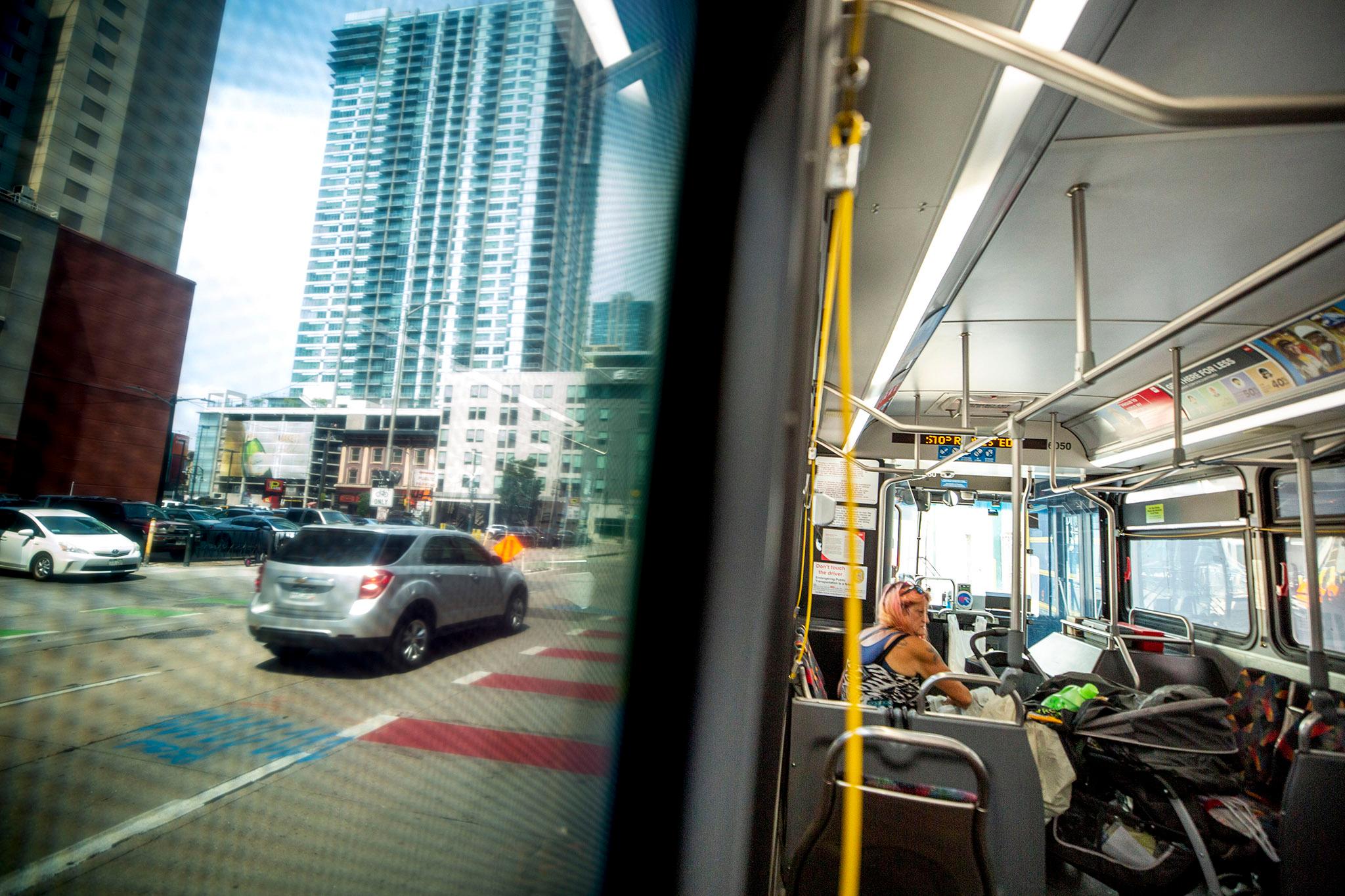There is, perhaps, not a more I'm-on-public-transit-in-Denver experience (other than taking a rail line to some highway-adjacent park-and-ride) than sitting on a traffic-stalled 15L bus on east Colfax Avenue.
The Regional Transportation District and the city and county of Denver have long-term plans to make that ride a whole lot speedier by dedicating an entire lane to buses in each direction of Colfax between downtown and the Aurora border. Buses would join regular traffic to the Colfax light rail station on Interstate 225.
The governments announced Tuesday that they'd asked the Federal Transit Administration to let them join a grant program that could ultimately lead to up to $100 million to keep that project moving. It's a key part of the city's overarching goal of enabling more people to move by methods that aren't their personal vehicles.
"Colfax BRT spotlights Denver's and the region's commitment to improving public transportation and moving more people in our community to jobs, healthcare, and other opportunities, all of which keep Denver a great place to live," Denver Mayor Michael Hancock said in a press release.
Driving will become more difficult on Colfax itself, but more frequent and speedier transit service is meant to make up for that. RTD says buses would run every five minutes during peak times and every 10 minutes during off-peak times. Stations would be spaced about a third of a mile apart.
Denver has raised $55 million for the project through the Elevate Denver Bond, which voters approved in 2017. The overall price tag could be between $200 million and $300 million in 2021 dollars, RTD's letter to the FTA says. That's significantly higher than the $168 million estimate Denverite reported in 2017.
"The construction estimate is higher because construction costs have increased since 2017," Nancy Kuhn, spokesperson for Denver's Department of Transportation and Infrastructure wrote in an email to Denverite.
The total project cost will be refined, RTD's letter says, and will be "supported by local, regional and state funding sources." RTD, which has its own budget issues, says in the letter it has enough money to operate and maintain the new service.
Last decade, RTD successfully applied to the same FTA "small starts" grant program for a light rail project in the southern edge of the metro area. It ultimately received $92 million from the feds for that.
A federal grant is the "best opportunity" the city has identified to meet its goal of opening the line by 2028, Kuhn said. A timeline in the letter says the application will take until the end of 2022 to file, and the application process could take until 2025 to conclude.
That's far too slow, said transit advocate Jill Locantore, executive director of the Denver Streets Partnership.
"It is truly ridiculous how long it can take to just dedicate some space for buses on a city street and provide some dignified accommodations for people riding the bus," Locantore tweeted. "I'm sure we could figure out how to do this faster, if people in positions of power actually cared."
A few key factors are contributing to the long wind-up, said Brian Pinkerton, principal project manager for the city.
First, the street itself is owned by the state Department of Transportation; the city and county do much of the maintenance on the road, and RTD operates the transit service. All those cooks in the kitchen means lots of coordination and planning is necessary.
"...agreement on the specifics of a complete reconfiguration of this road is much more complicated than if it was a city street controlled completely by Denver," he wrote in an email to Denverite.
Second, a detailed environmental review is needed because the local governments are applying for federal funding. And finally, Pinkerton wrote, construction alone is expected to take a couple of years.












